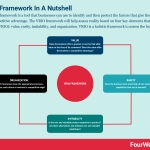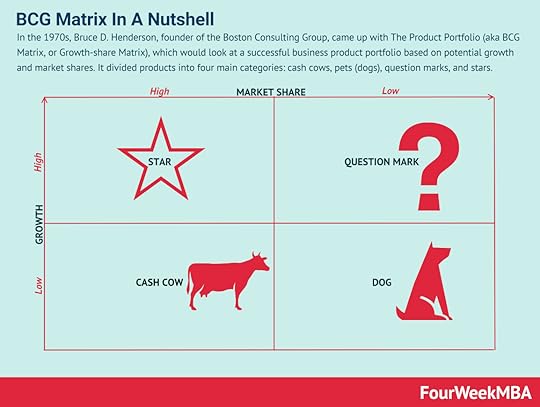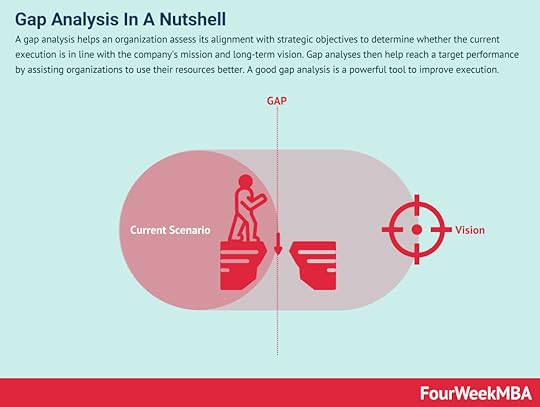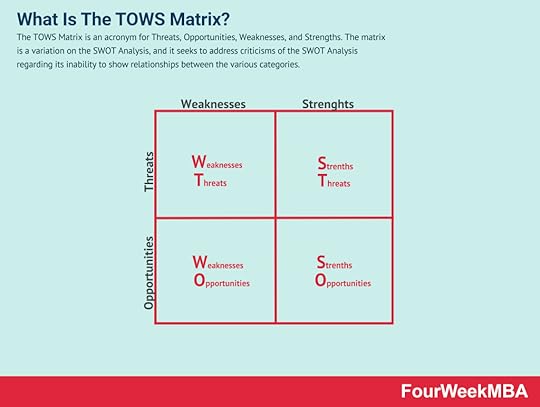What Is The VRIO Framework And Why It Matters In Business?


The VRIO framework is a tool that businesses can use to identify and then protect the factors that give them a long-term competitive advantage. The VRIO framework will help assess reality based on four key elements that make up its name (VRIO): value, rarity, imitability, and organization. VRIO is a holistic framework to assess a business.
Understanding the VRIO frameworkThe VRIO framework is an acronym of value, rarity, imitability, and organization. Each of these four components is traditionally approached in the style of a decision tree.
Following is the VRIO framework broken down into its constituent parts, with some important questions that may be asked:
Value – does the business offer a product or service that adds value to the lives of its customers? Does this value offer the business a competitive advantage? Businesses that answer yes to these questions can move to the next part.Rarity – does the business have ownership of rare resources or capabilities that are in demand? Businesses that answer no to these questions may have value but lack rarity and competitiveness and should go back to the first part. Imitability – is the rare and valuable product expensive to produce? Are there alternatives and similarly rare and valuable substitutes? Most businesses that fail to answer yes to these questions will have a competitive advantage, but only temporarily. Maintaining this advantage will require considerable time and money that will inevitably erode profit margins. The best solution for these businesses is to go back to the start of the process and reassess.Organization – for businesses with the good fortune to offer something valuable, rare, and difficult to imitate, they must next turn to their internal operations. Do such businesses have the appropriate processes, structures, and culture to maintain their competitive edge? Businesses who answer no to this last part have unfulfilled potential. That is, they do not have the required systems in place to take advantage of their competitive advantage.Those that answer yes to the last step have reached the ultimate goal of the VRIO framework – sustained competitive advantage.
Examples of the VRIO framework in businessGoogle is perhaps the best example of the VRIO framework in action. Their data-driven employment management system is valuable and rare. Indeed, no other company uses this form of employee management so extensively. Because of the size of Google’s workforce, it will prove prohibitively expensive for most companies to imitate. Google also invests heavily in training for HR managers so that they can derive maximum value from their competitive advantage.
Unlike Google, Coca-Cola has managed to exploit a solid VRIO framework in what is a very competitive market. The organization’s value lies in its high brand equity, or the perceived value of a brand in the minds of consumers. Coca-Cola’s product is not rare, but its presence in consumer lives is always associated with positive memories.
This makes their appeal hard to imitate because they have spent decades and billions of dollars in advertising to earn this place in consumer’s lives. With a presence in 196 countries worldwide, it is easy to appreciate Coca-Cola’s competitive advantage.
Other VRIO framework examplesIn the final section, let’s take a look at a VRIO framework for Nike.
1 – ValueNike very much delivers a brand that adds value to the lives of its customers, whether that be running shoes with extra cushioning or sports apparel that wicks sweat away from the body. Some consumers also wear or collect Nike products for their associated status.
These characteristics alone do not offer Nike a competitive advantage, but Nike’s brand image as a pioneer and innovator in the sports industry does. For example, no other company can lay claim to inventing the nylon upper, waffle sole, or cushioned spike plate.
Importantly, Nike maintains this culture of innovation today and by extension, earns continued business from its loyal customers.
2 – RarityDoes Nike control scarce resources or capabilities? Nike’s brand image is certainly rare among its peers, both in terms of appeal and financial value. Worth around $33 billion, Nike’s brand is the most valuable apparel brand in the world. This is a title the company has held for seven consecutive years, with Gucci at $15.6 billion a very distant second.
Nike’s research and development center in Oregon also allows it to create patents that, by their very nature, cannot be reproduced and made more common. Over many decades of innovative product development, the company has amassed over 25,000 patents.
3 – ImitabilityNike’s rare and valuable products are expensive to reproduce. Consider the Nike Sports Research Lab, for example, which among other things houses 400 motion-sensing cameras, 97 force plates, body-mapping equipment, and over 80 prototyping machines.
There are also full-size basketball courts, athletics tracks, and other real-world simulation facilities where athletes train with sports scientists to develop innovative products using machine learning, artificial intelligence, and big data.
4 – OrganizationAs we noted earlier, Nike has developed the ability to consistently innovate to maintain a competitive advantage. The company also has an extensive global network of dealers, suppliers, resellers, and manufacturers. Today, it would be almost impossible for a new or established business to recreate Nike’s network at scale.
Nike’s organizational structure also contributes to its competitive advantage. The company believes in diversity, inclusion, and the power of people to drive it forward. This tendency to respect racial and ethnic minorities, in particular, is echoed in Nike’s mission and vision statements. Nike wants to create sports apparel for the everyday athlete – not just professionals. It respects the unique experiences, perspectives, and values of its customers in much the same way that it does its global employee team.
To ensure this culture is not only embodied but sustained, employees are encouraged to memorize core philosophies such as “Be a sponge” and “If you have a body, you’re an athlete.” Nike also uses a Winnebago as a conference room because this is where CEO Phil Knight started selling shoes. The famous waffle iron that co-founder Bill Bowerman used to make rubber shoes is also displayed at Nike’s headquarters like a museum piece. If nothing else, these small touches create a sense of shared history, values, and culture that is difficult to replicate.
Key takeaways:The VRIO framework determines whether a particular business has any resources or capabilities that are valuable in a competitive context.The VRIO framework consists of the four constituent parts of value, rarity, imitability, and organization. A business must satisfy each part before moving on to the next.Large, multinational companies with efficient systems are best placed to take advantage of the VRIO framework – regardless of existing market competition.Other connected frameworksPorter’s Five Forces Porter’s Five Forces is a model that helps organizations to gain a better understanding of their industries and competition. Published for the first time by Professor Michael Porter in his book “Competitive Strategy” in the 1980s. The model breaks down industries and markets by analyzing them through five forces.SWOT Analysis
Porter’s Five Forces is a model that helps organizations to gain a better understanding of their industries and competition. Published for the first time by Professor Michael Porter in his book “Competitive Strategy” in the 1980s. The model breaks down industries and markets by analyzing them through five forces.SWOT Analysis
 A SWOT Analysis is a framework used for evaluating the business‘s Strengths, Weaknesses, Opportunities, and Threats. It can aid in identifying the problematic areas of your business so that you can maximize your opportunities. It will also alert you to the challenges your organization might face in the future.BCG Matrix
A SWOT Analysis is a framework used for evaluating the business‘s Strengths, Weaknesses, Opportunities, and Threats. It can aid in identifying the problematic areas of your business so that you can maximize your opportunities. It will also alert you to the challenges your organization might face in the future.BCG Matrix
 In the 1970s, Bruce D. Henderson, founder of the Boston Consulting Group, came up with The Product Portfolio (aka BCG Matrix, or Growth-share Matrix), which would look at a successful business product portfolio based on potential growth and market shares. It divided products into four main categories: cash cows, pets (dogs), question marks, and stars.Balanced Scorecard
In the 1970s, Bruce D. Henderson, founder of the Boston Consulting Group, came up with The Product Portfolio (aka BCG Matrix, or Growth-share Matrix), which would look at a successful business product portfolio based on potential growth and market shares. It divided products into four main categories: cash cows, pets (dogs), question marks, and stars.Balanced Scorecard
 First proposed by accounting academic Robert Kaplan, the balanced scorecard is a management system that allows an organization to focus on big-picture strategic goals. The four perspectives of the balanced scorecard include financial, customer, business process, and organizational capacity. From there, according to the balanced scorecard, it’s possible to have a holistic view of the business.Blue Ocean Strategy
First proposed by accounting academic Robert Kaplan, the balanced scorecard is a management system that allows an organization to focus on big-picture strategic goals. The four perspectives of the balanced scorecard include financial, customer, business process, and organizational capacity. From there, according to the balanced scorecard, it’s possible to have a holistic view of the business.Blue Ocean Strategy
 A blue ocean is a strategy where the boundaries of existing markets are redefined, and new uncontested markets are created. At its core, there is value innovation, for which uncontested markets are created, where competition is made irrelevant. And the cost-value trade-off is broken. Thus, companies following a blue ocean strategy offer much more value at a lower cost for the end customers.GAP Analysis
A blue ocean is a strategy where the boundaries of existing markets are redefined, and new uncontested markets are created. At its core, there is value innovation, for which uncontested markets are created, where competition is made irrelevant. And the cost-value trade-off is broken. Thus, companies following a blue ocean strategy offer much more value at a lower cost for the end customers.GAP Analysis A gap analysis helps an organization assess its alignment with strategic objectives to determine whether the current execution is in line with the company’s mission and long-term vision. Gap analyses then help reach a target performance by assisting organizations to use their resources better. A good gap analysis is a powerful tool to improve execution.Scenario Planning
A gap analysis helps an organization assess its alignment with strategic objectives to determine whether the current execution is in line with the company’s mission and long-term vision. Gap analyses then help reach a target performance by assisting organizations to use their resources better. A good gap analysis is a powerful tool to improve execution.Scenario Planning
 Businesses use scenario planning to make assumptions on future events and how their respective business environments may change in response to those future events. Therefore, scenario planning identifies specific uncertainties – or different realities and how they might affect future business operations. Scenario planning attempts at better strategic decision making by avoiding two pitfalls: underprediction, and overprediction.Value Chain
Businesses use scenario planning to make assumptions on future events and how their respective business environments may change in response to those future events. Therefore, scenario planning identifies specific uncertainties – or different realities and how they might affect future business operations. Scenario planning attempts at better strategic decision making by avoiding two pitfalls: underprediction, and overprediction.Value Chain  In his 1985 book Competitive Advantage, Porter explains that a value chain is a collection of processes that a company performs to create value for its consumers. As a result, he asserts that value chain analysis is directly linked to competitive advantage. Porter’s Value Chain Model is a strategic management tool developed by Harvard Business School professor Michael Porter. The tool analyses a company’s value chain – defined as the combination of processes that the company uses to make money.Pestle Analysis
In his 1985 book Competitive Advantage, Porter explains that a value chain is a collection of processes that a company performs to create value for its consumers. As a result, he asserts that value chain analysis is directly linked to competitive advantage. Porter’s Value Chain Model is a strategic management tool developed by Harvard Business School professor Michael Porter. The tool analyses a company’s value chain – defined as the combination of processes that the company uses to make money.Pestle Analysis The PESTEL analysis is a framework that can help marketers assess whether macro-economic factors are affecting an organization. This is a critical step that helps organizations identify potential threats and weaknesses that can be used in other frameworks such as SWOT or to gain a broader and better understanding of the overall marketing environment.TOWS Matrix
The PESTEL analysis is a framework that can help marketers assess whether macro-economic factors are affecting an organization. This is a critical step that helps organizations identify potential threats and weaknesses that can be used in other frameworks such as SWOT or to gain a broader and better understanding of the overall marketing environment.TOWS Matrix The TOWS Matrix is an acronym for Threats, Opportunities, Weaknesses, and Strengths. The matrix is a variation on the SWOT Analysis, and it seeks to address criticisms of the SWOT Analysis regarding its inability to show relationships between the various categories.STEEP Analysis
The TOWS Matrix is an acronym for Threats, Opportunities, Weaknesses, and Strengths. The matrix is a variation on the SWOT Analysis, and it seeks to address criticisms of the SWOT Analysis regarding its inability to show relationships between the various categories.STEEP Analysis The STEEP analysis is a tool used to map the external factors that impact an organization. STEEP stands for the five key areas on which the analysis focuses: socio-cultural, technological, economic, environmental/ecological, and political. Usually, the STEEP analysis is complementary or alternative to other methods such as SWOT or PESTEL analyses.STEEPLE Analysis
The STEEP analysis is a tool used to map the external factors that impact an organization. STEEP stands for the five key areas on which the analysis focuses: socio-cultural, technological, economic, environmental/ecological, and political. Usually, the STEEP analysis is complementary or alternative to other methods such as SWOT or PESTEL analyses.STEEPLE Analysis The STEEPLE analysis is a variation of the STEEP analysis. Where the step analysis comprises socio-cultural, technological, economic, environmental/ecological, and political factors as the base of the analysis. The STEEPLE analysis adds other two factors such as Legal and Ethical.
The STEEPLE analysis is a variation of the STEEP analysis. Where the step analysis comprises socio-cultural, technological, economic, environmental/ecological, and political factors as the base of the analysis. The STEEPLE analysis adds other two factors such as Legal and Ethical. Read also: Business Strategy, Examples, Case Studies, And Tools
Read more:
What Is a Business ModelWhat Is Business Model InnovationWhat Is Business StrategyWhat Is a Value PropositionWhat Is Market SegmentationWhat Is a Marketing StrategyThe post What Is The VRIO Framework And Why It Matters In Business? appeared first on FourWeekMBA.



